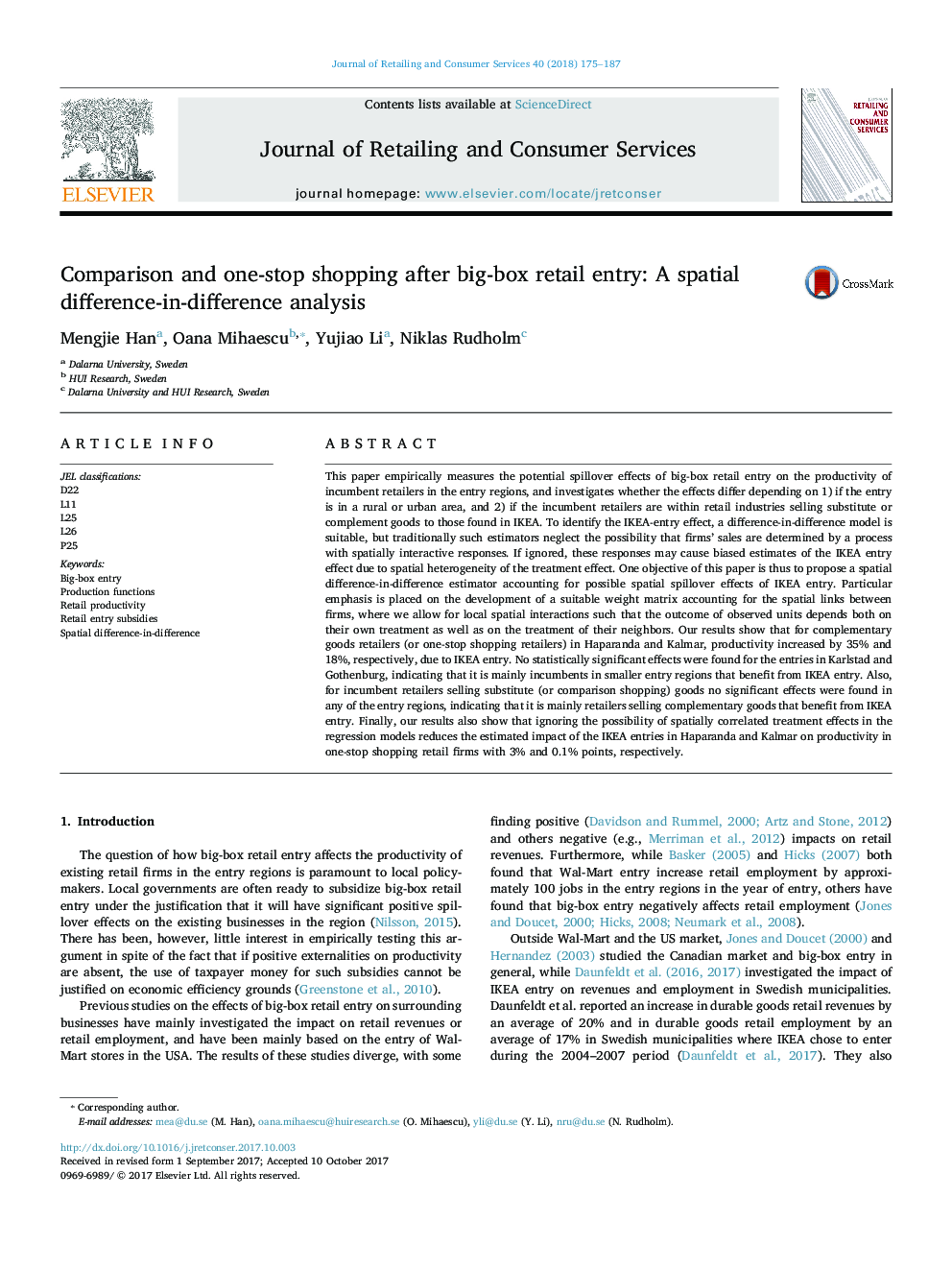| Article ID | Journal | Published Year | Pages | File Type |
|---|---|---|---|---|
| 7433651 | Journal of Retailing and Consumer Services | 2018 | 13 Pages |
Abstract
This paper empirically measures the potential spillover effects of big-box retail entry on the productivity of incumbent retailers in the entry regions, and investigates whether the effects differ depending on 1) if the entry is in a rural or urban area, and 2) if the incumbent retailers are within retail industries selling substitute or complement goods to those found in IKEA. To identify the IKEA-entry effect, a difference-in-difference model is suitable, but traditionally such estimators neglect the possibility that firms' sales are determined by a process with spatially interactive responses. If ignored, these responses may cause biased estimates of the IKEA entry effect due to spatial heterogeneity of the treatment effect. One objective of this paper is thus to propose a spatial difference-in-difference estimator accounting for possible spatial spillover effects of IKEA entry. Particular emphasis is placed on the development of a suitable weight matrix accounting for the spatial links between firms, where we allow for local spatial interactions such that the outcome of observed units depends both on their own treatment as well as on the treatment of their neighbors. Our results show that for complementary goods retailers (or one-stop shopping retailers) in Haparanda and Kalmar, productivity increased by 35% and 18%, respectively, due to IKEA entry. No statistically significant effects were found for the entries in Karlstad and Gothenburg, indicating that it is mainly incumbents in smaller entry regions that benefit from IKEA entry. Also, for incumbent retailers selling substitute (or comparison shopping) goods no significant effects were found in any of the entry regions, indicating that it is mainly retailers selling complementary goods that benefit from IKEA entry. Finally, our results also show that ignoring the possibility of spatially correlated treatment effects in the regression models reduces the estimated impact of the IKEA entries in Haparanda and Kalmar on productivity in one-stop shopping retail firms with 3% and 0.1% points, respectively.
Related Topics
Social Sciences and Humanities
Business, Management and Accounting
Marketing
Authors
Mengjie Han, Oana Mihaescu, Yujiao Li, Niklas Rudholm,
